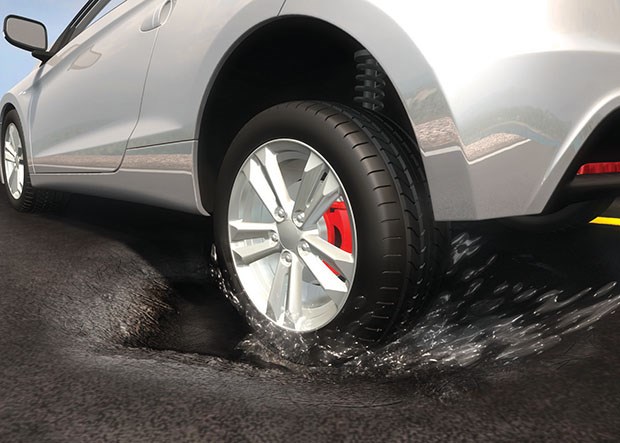That curb you bumped while negotiating an icy corner last winter might not appear to have done any damage, but chances are your vehicle is a candidate for an alignment check.
If you hit it - or that pothole - hard enough, you might notice your vehicle no longer tracks straight and tends to pull to one side, particularly while braking. In a severe case your steering wheel might even be askew.
But in most cases wheel misalignment is subtler and often goes unnoticed until it becomes obvious through unusual tire wear patterns.
When a vehicle leaves the factory its wheels are aligned in a geometric relationship with the actions of the suspension and steering. The main settings, known as camber, caster and toe-in and ride height, determine how it will react during acceleration, braking, turning, hitting bumps or just rolling down the highway.
Tire tread wear patterns are a clear visual clue to bad alignment and are easy to detect, but only after they've become established, by which time you've usually ruined an expensive set of tires.
A simple check can be conducted using a coin to measure tread depth on the inside, centre and outside of the tire. If the tread is deeper on the edges than the centre, the tire has been running over-inflated. If the tread is deeper in the centre than the edges, it's been running under inflated.
Simply inflating them to the correct pressure can solve these problems.
If the tread is deeper on one side than the other, however, you have a camber problem. Another check involves running your hand over the tire. If you find the surface is smooth in one direction and jagged in the other, you've likely discovered the saw-tooth wear pattern related to a toe-in problem.
In both cases, professional attention is required.



